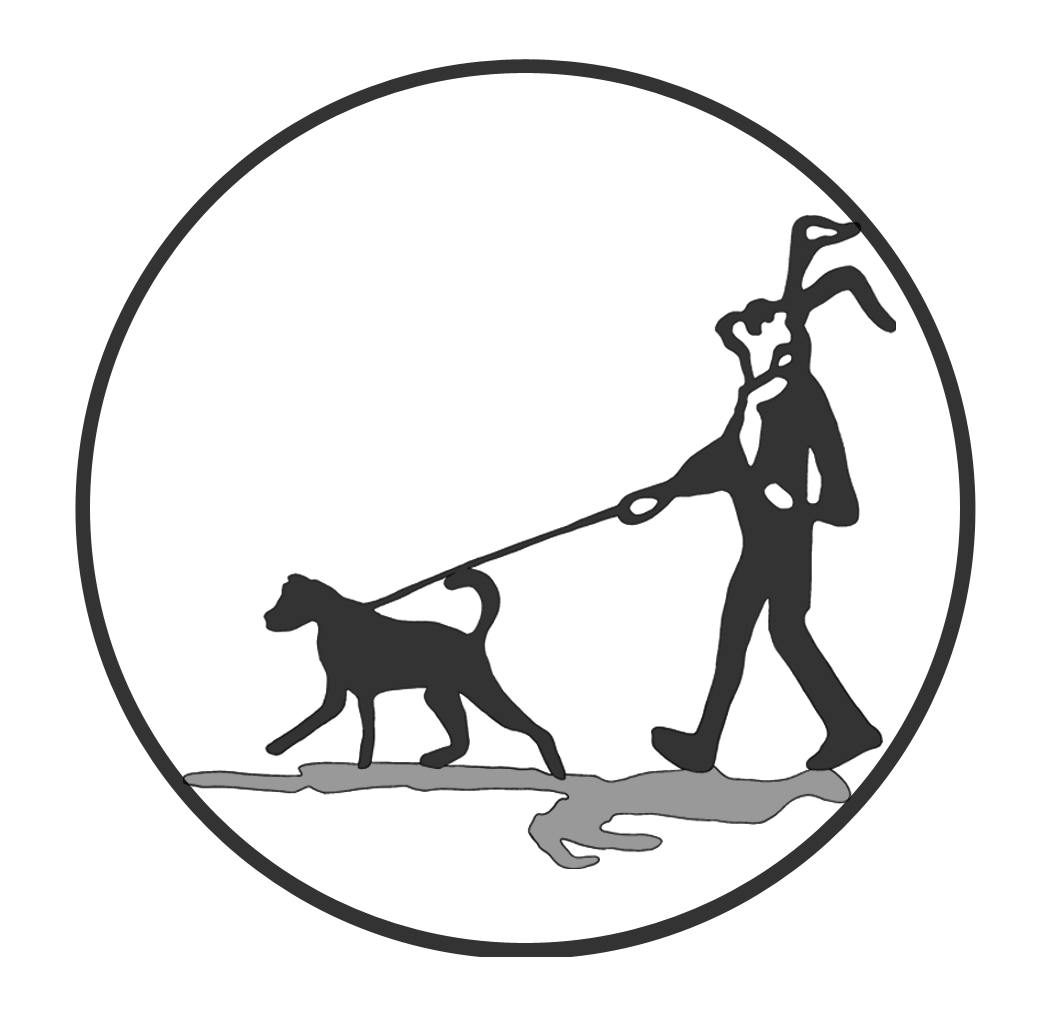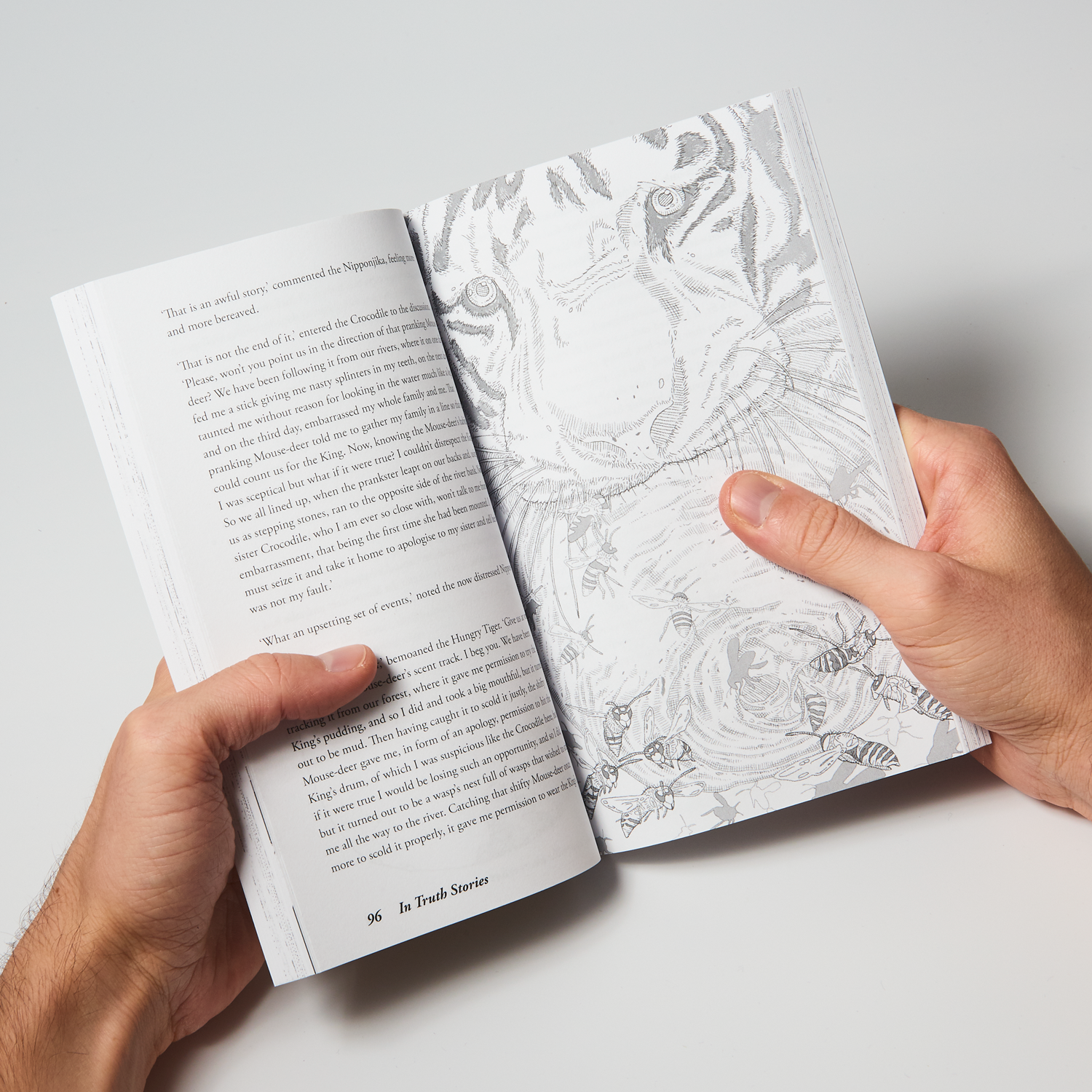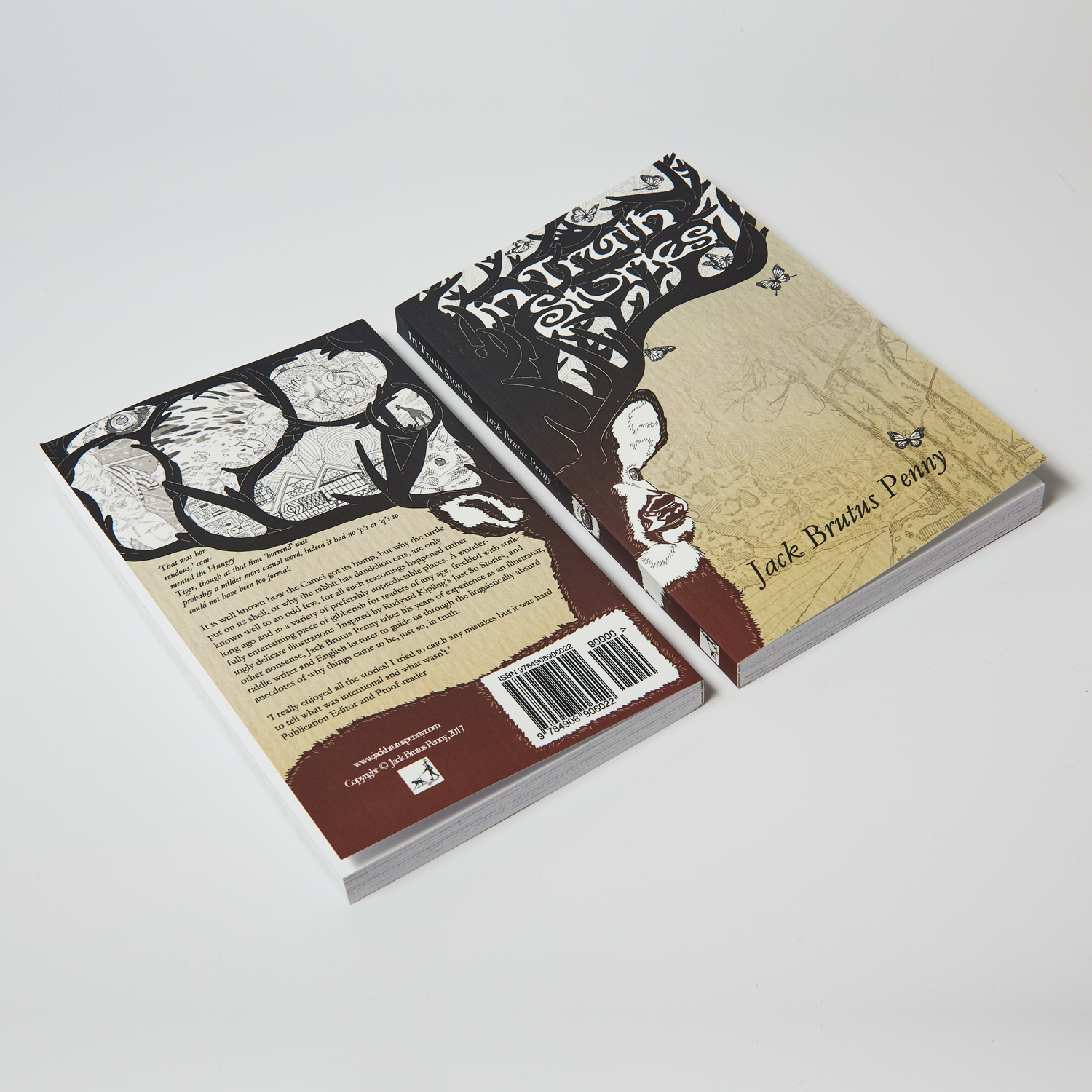An In Truth Story
Why the Chameleon Wears a Coat of Mirrors
Colour is such an important thing. Colour can show whether a food is ripe or not, or even whether a food is edible or not, though we surely can’t call inedible food, food. Colour can also warn us of dangerous animals we might come in contact with. The yellow Wasp, for instance, has quite poor people skills and can say things that sting a little, suggesting one should avoid yellow. It is not surprising then that our own colour is so important to us. So why, you I’m sure wonder, if colour is such a defining feature, does the Chameleon not have a colour of its own? Why, and how, does the Chameleon just blend? Well, since you have asked such insightful questions, and thus far no outsightful answers have been provided, though this is not surprising as most people can’t remember back to when there was no colour, grant me a moment to give you the honest account of how this all came about, just so, in truth.
After the painting of the world, when all life began, and the vault of the sky separated so that the sun and the moon could divide time between themselves fairly, neither being greater or lesser than the other, when plants and flowers bloomed radiant colours, bore fruit bearing seeds, and everything was pretty agreeable, this was when the first animals were born. The first animals had neither colour, not even the Rainbow Fish, nor pattern, not even the Leopard its spots, until they too were painted. But this story happened early on the sixth day when all the animals had been mixed and baked, but no dye or icing had yet been added. All, but one. Early on this sixth day, the Chameleon, whilst still being baked, shot out its long, dexterous tongue and scooped up some red and blue and yellow berries, so that when it was baked it came from the oven already glazed a marvellous array of colours.
However, the Chameleon walked among the other animals as oblivious as a pen in a pencil case: naturally there, but unaware how unnatural it was. All the animals would offer kind words, for they were generous and shared a lot with each other.
'What a beautiful coat you have,' they would say. But since the Chameleon had never seen itself, it assumed these were pleasantries of the typical kind and returned the offer.
'What a marvellous jacket you wear,' the Chameleon said to the, then and still, grey Donkey, making the Donkey feel unintentionally though nonetheless intensely like an Ass.
So one day, the greyish-brown and completely monotonous animals gathered and decided something must be done. Since it wasn’t any fault of the Chameleon’s, they decided to educate it rather than give its tongue to the cat, who collected tongues, though no one knew why and for some reason no one bothered to ask. So they invited the Chameleon to a picnic by the lake. It being such a significant moment, all animals of all kind were there for the picnic, though not really for the picnic at all.
The animals were far cleverer than they were colourful, and when the Chameleon arrived, they proposed a game, or rather, a treasure hunt of sorts. The first animal to spot an animal they’ve never spotted before wins. Despite knowing the purpose of the game, for all the animals except the Chameleon were in on it having proposed it together, they still found the game delightfully amusing and ran around with the Chameleon, not mockingly at all, except the Mockingbird, but it couldn’t help itself, pouncing and plunging in all directions.
They were spinning as fast as they could, climbing trees and digging outlandishly deep holes, but no animal approached the water, which sat still, waiting. The Chameleon, also marvellously thrilled, was skipping everywhere, and if the other animals weren’t so preoccupied, they’d surely have thought the day successful enough just to see the Chameleon’s pleasure.
Eventually, the Chameleon, skipping-tumbled down to the bank of the lake, wishing to confer with the bank tellers, for their stories may tell of some animal it had never spotted before. But it stopped by the water. As its left eye focused intently forward, its right was rolling freely about and noticed something unfamiliar in the water, something as colourful as a tongue-full of berries. The Chameleon looked again, squinting to show that it was trying to focus. There was an animal, clearly ept at swimming, incredibly colourful despite all other animals being so greyish-brown and completely monotonous, one the Chameleon had certainly never seen before, squinting right back at it.
'Who’s there?' the Chameleon asked, arching its neck back and dipping the edges of its mouth to show how inquisitive it was. But the animal only responded with the same, quite perfectly timed words. 'Who’s there?' repeated the Chameleon, hopping back and then leaning over once again, its mouth still dipped. This animal, thought the Chameleon, is the most splendid creature of them all, and the Chameleon, as if pushed, dove unexpectedly into the water to embrace such splendiderouness. Falling through the water, the Chameleon splattered and spluttered and pulled itself back up. As it looked drippingly up it realised two things – that all the other animals had stopped their search and were lined watching the Chameleon silently, and that the animal it had never spotted before, the only animal with such an array of colour, was itself. All the on-looking animals, for the Chameleon had arched its eyebrows and pursed its lips to indicate it had realised these two things, began to jump and cheer. But little did they know that with one solution comes another problem, for now it was too late, and the Chameleon was in love.
The sun came and went, and it was time for the moon to march the sky, and the Chameleon still sat, near the bank, by the water, looking and squinting. The sun came back from its rest and took its sentinel place, and the Chameleon was still there. The sixth day ended, the seventh even came and went. All the animals now had been properly painted with their colours, especially the Rainbow Fish, and patterns had been given, though the Leopard’s spots would come later, and the Chameleon was still there.
Since it wasn’t any fault of the Chameleon’s, the animals thought, they decided to assist it rather than make it hold its horses, for that certainly would have preoccupied the Chameleon, but horses are cruelly heavy. So the animals thought and thought until they could have thunk no longer and finally came up with a solution. If the Chameleon could always see itself, then it would not have to squint at the water but could at least live an ordinary life, though in love with itself.
So the animals gathered as much Walrus tusk as they could get, of course, donated by the Walrus, for the Walrus was most bitterly contemplative having regrettably lost its little Oyster friends only recently, though that’s another story already told, and so its tusks must be incredibly reflective. And from them, the animals made a morse coat of ivory mirrors.
'Chameleon,' the animals pled, 'do wear this morse coat, we made it special for you.' But the Chameleon was so bedevilled with itself it could neither look at nor listen to anything else. 'Chameleon,' the animals re-pled, 'do wear this morse coat, and then you might see yourself in everything, in spite of eating or playing, and then surely be better.' This the Chameleon gladly heard and took the morse coat of ivory mirrors, swung it over its back and fastened it firmly, for the Chameleon wanted to be able to see itself in everything.
Unfortunately, with this swing and fasten, the Chameleon suddenly and resolutely disappeared. Not a single wild thing there had considered that such a reflective coat would reflect upon all the surroundings and not just the Chameleon itself. Now, none of the animals could see the colourful Chameleon. They called to the Chameleon, naturally in rhyme for they already had a reason, 'Chameleon, Chameleon, by the lake, won’t you come back to us opaque?' but nothing stirred. They called the morse coat, 'Mirrors, mirrors, ‘round its chest, won’t you give back our friend undressed?' but still nothing stirred. The animals groped and poked and probed high and low, but there is nothing as problematic as finding something unseen, other than possibly being a Sow, since it consists principally of dealing with Boars.
Likewise, and to worse effect, the Chameleon could no longer see itself. When the Chameleon climbed a tree, it could only see a tree. When the Chameleon lay on a rock, a rock it could see. And it couldn’t see the morse coat of ivory mirrors to unfasten. 'Were I a Ferret with a plain brown coat,' the Chameleon bemoaned regretfully, 'or a charcoal Mustang or a Horse of another colour, I would at least have a tinge of my own, as all would say, "Look, there goes the Horse in its appropriate glaze!" But now I am a tiffany mutt, and people will say of those that blend with any crowd with changeable characters and no real stuff of themselves, "Look, there goes a Chameleon in a morse coat," for I, now, have no true colours'.










